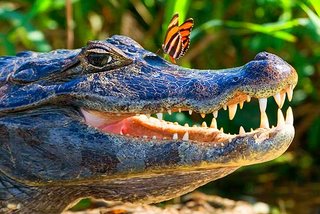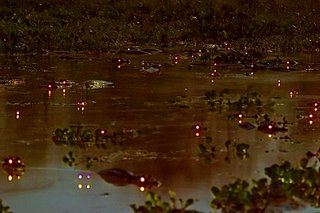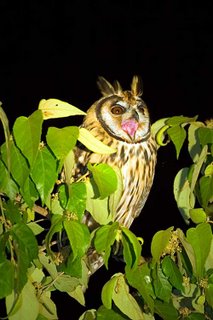.
.
.
( Read Part 1 of this story)
.
.
.
 The guy who did all the damage probably looks pretty much like this… PHOTO: © Daniel De Granville, 2006
The guy who did all the damage probably looks pretty much like this… PHOTO: © Daniel De Granville, 2006
.
.
( Read Part 1 of this story)
.
.
.
 The guy who did all the damage probably looks pretty much like this… PHOTO: © Daniel De Granville, 2006
The guy who did all the damage probably looks pretty much like this… PHOTO: © Daniel De Granville, 2006Following on with the stories about my trips with the Nat Geo, there’s a nice one about the day when we did the photo which was chosen to open the article in the magazine (an underwater shot of a caiman with fish around).
This is how it worked: I had to stand up in a rapid which was crowded with caimans (reeeeally crowded!), with water waist high, holding the underwater camera with the help of a handle which we adapted from a painters’ pole. Joel Sartore would stay on the outside, about 30 feet away, watching the whole scene through a monitor and remotely firing the camera whenever he saw the opportunity for a good shot. I had to follow his instructions: “go closer”, “lower”, “horizon is crooked”, “try to get the caiman in profile”, “tilt up”, and so on. All of this was done with the equipment about 10 inches away from the critters’ mouths, since we were using a 24 mm wide angle lens.
It took us three full days to get “ The Shot”, the one in which the photographer clicks and feels sure that it was worth all efforts. And, in our case, the efforts included the most peculiar moment of the whole story: I was fully at ease, doing my job, when I felt a sort of a thud on the camera’s pole. I thought it was a rock coming down with the current, but just to make sure I decided to check it out. I took the camera out and noticed that the underwater housing’s glass dome had some water inside. I called Joel, we analyzed the equipment and noticed some scratches plus three holes through the dome, the result of a bite that some caiman in a bad mood decided to take at our gear. Luckily I took the camera out of the water in time, before it got wet, and the glass didn’t shatter, which could have caused some wound in our crocodilian buddy (even though I am not sure if some smithereens of glass would do any harm to folks who are used to crushing live piranhas...).
.
.
.
.
.






